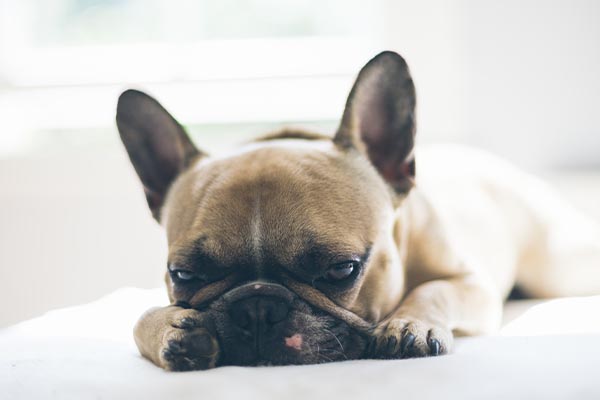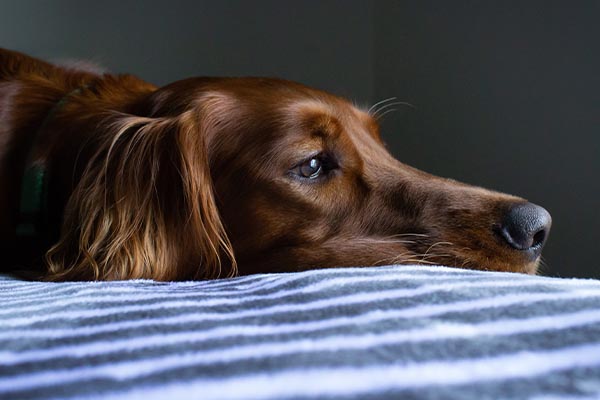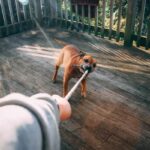There are three Parvo vaccine shots, typically one at 6 weeks, 8 weeks, and 12 weeks. Puppies that haven’t been vaccinated or come into contact with infected puppies may contract parvo. If this is the case, here’s how to know if your puppy will survive parvo.
What Is Parvovirus
While utmost canine owners have heard of parvo, only those who’ve watched for an infected puppy truly understand how devastating this virus is. Parvo has a high mortality rate and is one of the most infectious viruses that affect puppies.
The scary thing is, that parvo can survive in the soil for a long time, and you can pick it up outdoors and transfer it to your puppy dog without knowing it! Your puppy dog can also contract parvo through direct contact with an infected canine, so be redundant and watchful if you’re raising sibling puppies.
Another possible script of catching parvo is by indirect contact with a contaminated object. So, every time your puppy dog goes outdoors and sniffs or licks doggy poop, there’s a chance of exposure if the poop is contaminated.
Likewise, your puppy dog can get parvo if they play with an infected canine or puppy dog, or touch a food coliseum, leash, collar, or harness used by an infected canine.
Canine parvovirus is classified as a gastrointestinal disease since it causes the most damage to the stomach and small bowel. This contagion destroys cells in the small bowel, which diminishes nutrient immersion.
How Do I Know If My Puppy Dog Has Parvo
Until your puppy dog has all three vaccination shots to help get parvo, he or she may be at threat of getting this fatal disease. The three shots should be administered over a 12 weeks period. After all three shots are administered, your puppy dog will also need a supporter shot formally per year.
Luckily, parvo isn’t a silent disease. Rather, there are plenty of signs to let you know that your puppy dog has parvo so you can act snappily and get proper treatment right down.
Vomiting Frequently With Blood In It
Generally, the first sign of parvo in puppies is if your puppy dog starts to heave constantly. The heave can come in colorful colors and textures. You may see brown, yellow, or indeed clear-colored heavens.
Frequent Bloody Diarrhea
Puppy dogs with parvo may have bloody diarrhea veritably constantly. Your puppy dog’s diarrhea may indeed be mustard-colored or light yellow.
Drooling Exorbitantly
In addition to puking and having diarrhea, your puppy dog may drool exorbitantly and indeed froth at the mouth. His or her nose will be running as well.

Loss Of Appetite
When your puppy dog has parvo, he or she’ll lose its appetite indeed if you’re offering them their favorite food. Most probably your puppy dog isn’t heading over to her food bowl and seems veritably disinterested in their food when you’re trying to hand feed it to them.
Since your puppy dog generally devours their food, this sign can be worrisome for numerous owners. You’ll want to consult with your vet right down about this. Indeed if your doggy does manage to eat, he’ll most probably throw up what he just ate.
Weight Loss
As a result of not eating due to a loss of appetite, your puppy dog may start to lose weight. You may see his caricatures popping out or showing indeed though the belly appears to be big and bloated.
Dehydration
In addition to not eating, puppies with parvo may refuse to drink water as well. When this happens, it becomes a serious problem. That’s because your puppy dog can get dehydrated from not drinking water and from both diarrhea and vomiting symptoms.
Fever Or Hypothermia
When it comes to canine parvovirus, one of the most common symptoms is fever. To find out whether your puppy dog has a fever, you’ll want to gently touch his head and around his ears and feel his temperature. However, also your puppy dog may have a fever, If his head and around his ears are hot.
Abdominal Pain And Bloating
Your puppy dog may be hunched over because he may have abdominal pain. His tummy may also look bloated and round. When you touch his abdomen, your puppy dog may start crying and yelling because the tummy area is veritably sensitive.
Lethargy
Instead of being debonair, sportful, and energetic, your puppy dog is sleepy and feeling down. He’s not interested in playing or being with other faves or family members. When you try to play with your puppy dog or pick him up, your puppy dog refuses to sit up and will lie back down.
Treating Parvo In Puppies
Your vet will diagnose parvo grounded on clinical signs and through blood work. She may also run a test called an ELISA to search for virus antigens in your puppy’s feces and will perform fresh individual testing as demanded.
There’s no cure for parvo. Your warhorse will offer your puppy dog probative care over the course of the illness, treating symptoms such as vomiting, diarrhea, and dehumidification, and making sure that your puppy dog gets acceptable nutrition.
Serious viruses like parvo weaken a puppy dog’s vulnerable system and lower his white blood cell count, reducing his capability to fight off secondary bacterial infections. The damage the contagion does to a canine’s intestinal wall increases the liability of a secondary infection. Your vet may put your puppy dog on an antibiotic drug to combat these bacterial infections and will monitor your puppy dog precisely for additional complications.
Parvo is a potentially fatal disease. The survival rate of puppies treated by a veterinarian is 68 to 92 percent, and utmost puppies that survive the first three- to four days make a complete recovery. Recovery times vary depending on the severity of the case, but it generally takes roughly one week for puppies to recover from parvo.
Your veterinarian will walk you through the applicable treatment way for your puppy dog’s case and will advise you about any precaution.





